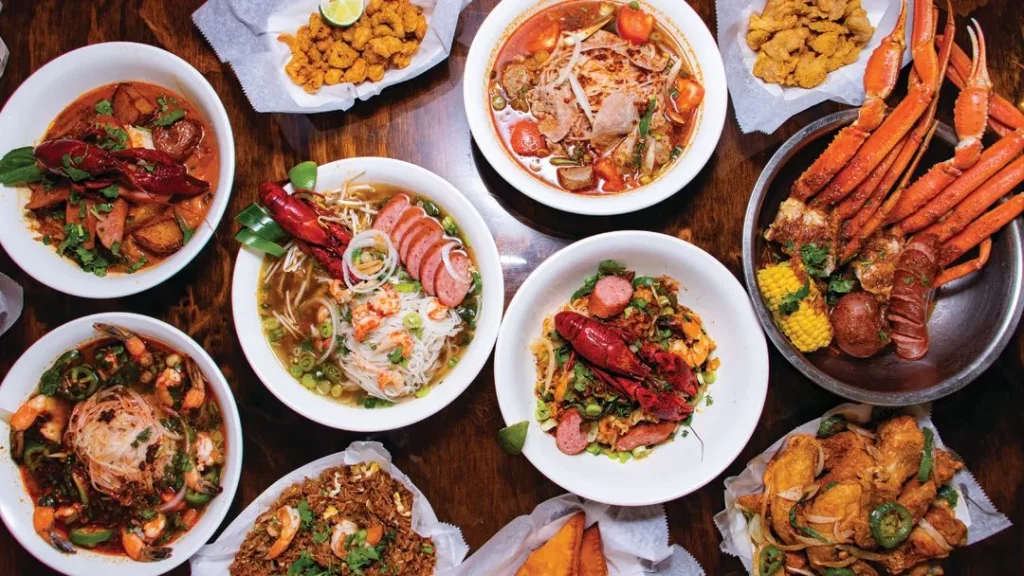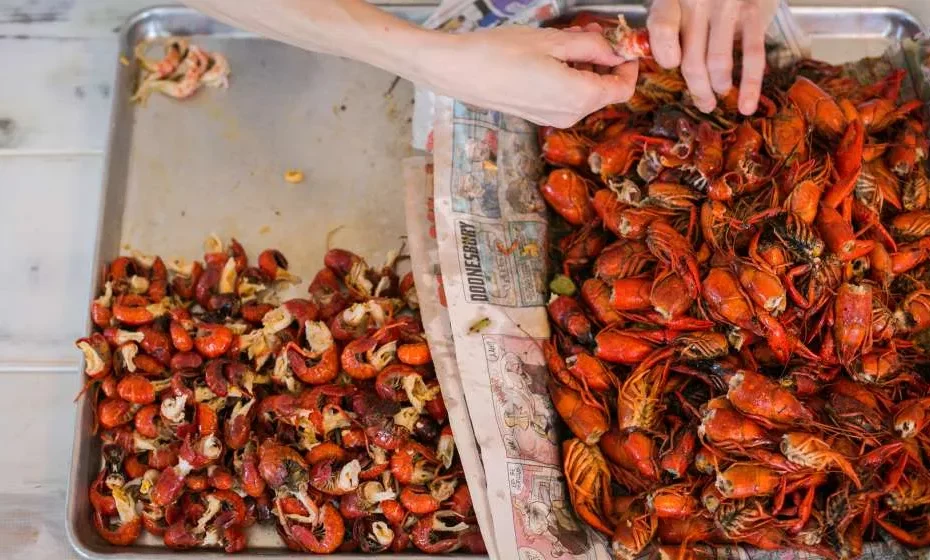In the heart of Louisiana, where the Mississippi River unfolds like a silver ribbon, a rich, spicy culinary tradition flourishes.
Adverts
Cajun culture, rooted in the history of exiled Acadians, weaves a tapestry of unique flavors, and its ingredients are the vital threads that keep it pulsating and alive.
A Dance of Spices and History
The word “Cajun” conjures up images of meandering bayous, lively music and, of course, cuisine that is a feast for the senses.
To truly understand the essence of this culinary tradition, it's crucial to delve into the ingredients that are the backbone of dishes like gumbo, jambalaya, and étouffée.
Typical Louisiana Dishes: A Journey of Flavors
In Louisiana, cuisine is an art form, and its signature dishes are the strokes of a unique gastronomic palette. Gumbo, a thick stew packed with flavors, is an emblematic example.
Its varied ingredients, such as andouille, shrimp and okra, reflect the region's cultural diversity. This dish is not just a local delicacy, but a tangible expression of the fusion of African, French and Spanish influences.
Another example is jambalaya, a bold mix of rice, meat and vegetables. This dish, with roots in Spanish paella, has become a symbol of Louisiana's ability to absorb and reinterpret foreign culinary traditions. Each bite is a celebration of the adaptability of Cajun culture, reflecting the region's unique history.
Impact on Local Cuisine and Culture
Louisiana cuisine transcends gastronomic boundaries and becomes an intrinsic part of local culture. Cajun dishes aren't just meals; they are tangible manifestations of a rich and complex heritage.
The tradition of gathering around the table to share stories and flavors is a fundamental part of life in Louisiana, providing a deep connection between generations and communities.
Furthermore, the influence of local cuisine is evident in festivals and events that celebrate the region's gastronomic diversity.
Gumbo festivals and jambalaya competitions are opportunities for locals to show off their culinary skills, proudly sharing the flavors that define Louisiana.
Ingredients as Cultural and Historical Markers
The ingredients used in Cajun cuisine are not just elements to create delicious meals; they also act as cultural and historical markers.
The use of roux, for example, dates back to the need to improvise during the Acadians' period of exile, becoming a symbol of resilience. The vegetable trilogy is not just an aromatic blend; is a vivid representation of the fusion of cultural influences in Louisiana.
The use of local ingredients, such as fresh shrimp from the Gulf of Mexico and the abundance of seafood, is a testament to the geographic proximity and economic dependence of coastal communities.
These ingredients not only enrich the dishes, but also tell stories of fishing communities and their contributions to the region's culinary richness.
Gastronomic Tourism: A Journey of Flavors in Louisiana
Tourism in Louisiana is inseparable from its rich culinary tradition. Visitors from around the world are drawn to the tantalizing aromas that waft over local food markets and renowned restaurants.
Food tours have become a popular way to explore the diversity of flavors the region offers.
The French Quarter in New Orleans is an epicenter of culinary activity, where historic and modern restaurants mix, providing a unique culinary experience.
Festivals dedicated to cuisine, such as the New Orleans Food and Wine Festival, highlight the importance of gastronomy in attracting tourists and preserving Louisiana's cultural identity.
Roux: The Resilient Foundation
Roux, a mixture of flour and fat cooked until it reaches a rich brown color, is the fundamental base of many Cajun dishes.
Not only does it add a subtle depth of flavor, but it also serves as a symbolic representation of the resilience of the Cajun people.
During their period of exile, the Acadians learned to improvise with limited ingredients, transforming the simple roux into a gastronomic masterpiece.
The Vegetable Trilogy: Sustaining Tradition
The trilogy of vegetables – onions, peppers and celery – is the holy trinity in Cajun cuisine. These ingredients, carefully cut and combined, form the aromatic base that perfumes Cajun dishes.
More than mere components, these vegetables represent the harmony between the French and Spanish influences that have shaped Cajun cuisine over the centuries.
Andouille: A Symphony of Meat and Seasoning
Andouille, a smoked and spiced sausage, adds a robust note to many Cajun dishes. Its distinct flavor is a testament to the African, French and German influence that converged in the Louisiana region.
Andouille, with its bold seasoning profile, is a link between Louisiana's multicultural past and Cajun cuisine's savory present.
Fresh Shrimp: The Treasures of the Gulf
The proximity to the Gulf of Mexico has presented Cajun culture with an abundance of seafood, with fresh shrimp being a gastronomic jewel.
Its presence in dishes like gumbo not only adds a succulent texture, but also tells the stories of the fishing communities that played a vital role in shaping Cajun cuisine.
Okra: The Magic of Viscosity
Okra, often underrated, is a magical ingredient in Cajun cooking. Its presence in dishes like gumbo not only contributes to texture, but also serves as a natural thickening agent.
This humble vegetable is a silent testament to the Cajuns' ability to transform simple ingredients into extraordinary culinary experiences.
Final Considerations: A Celebration of Flavors
Cajun culture is a vivid testament to the richness that can emerge when simple ingredients are combined with a rich history and diverse heritage.
Each Cajun dish is a celebration of intertwining flavors, telling stories of exile, resilience, and joy shared around the table.

As we explore the ingredients of Cajun culture, we discover that each bite is a journey through time and traditions, an experience that transcends the palate to embrace the rich cultural heritage that defines Louisiana.
So the next time you enjoy a Cajun dish, remember that you are experiencing more than a meal – you are immersed in a living history, where the ingredients are the silent heroes that unite past and present into a memorable feast.




